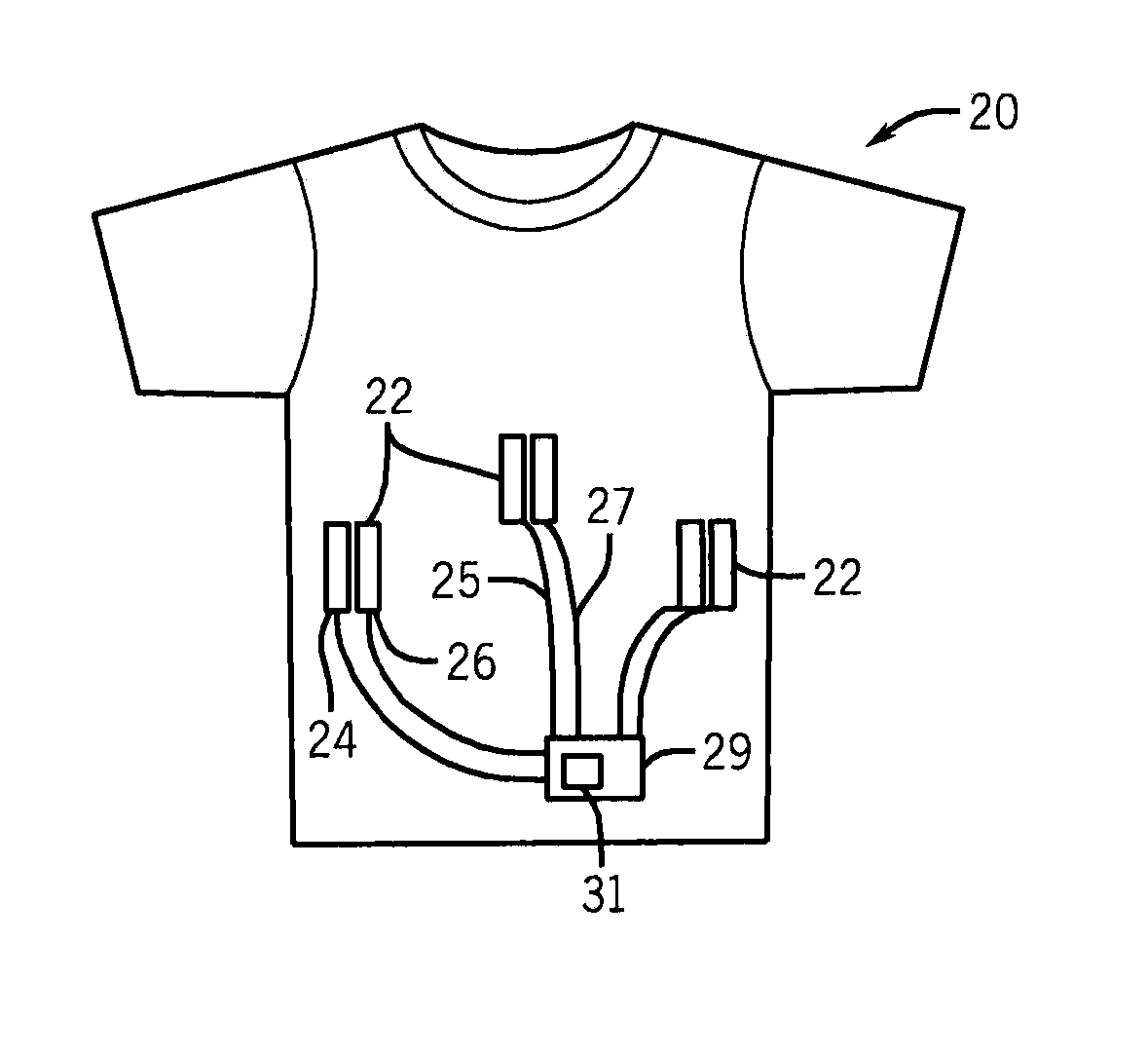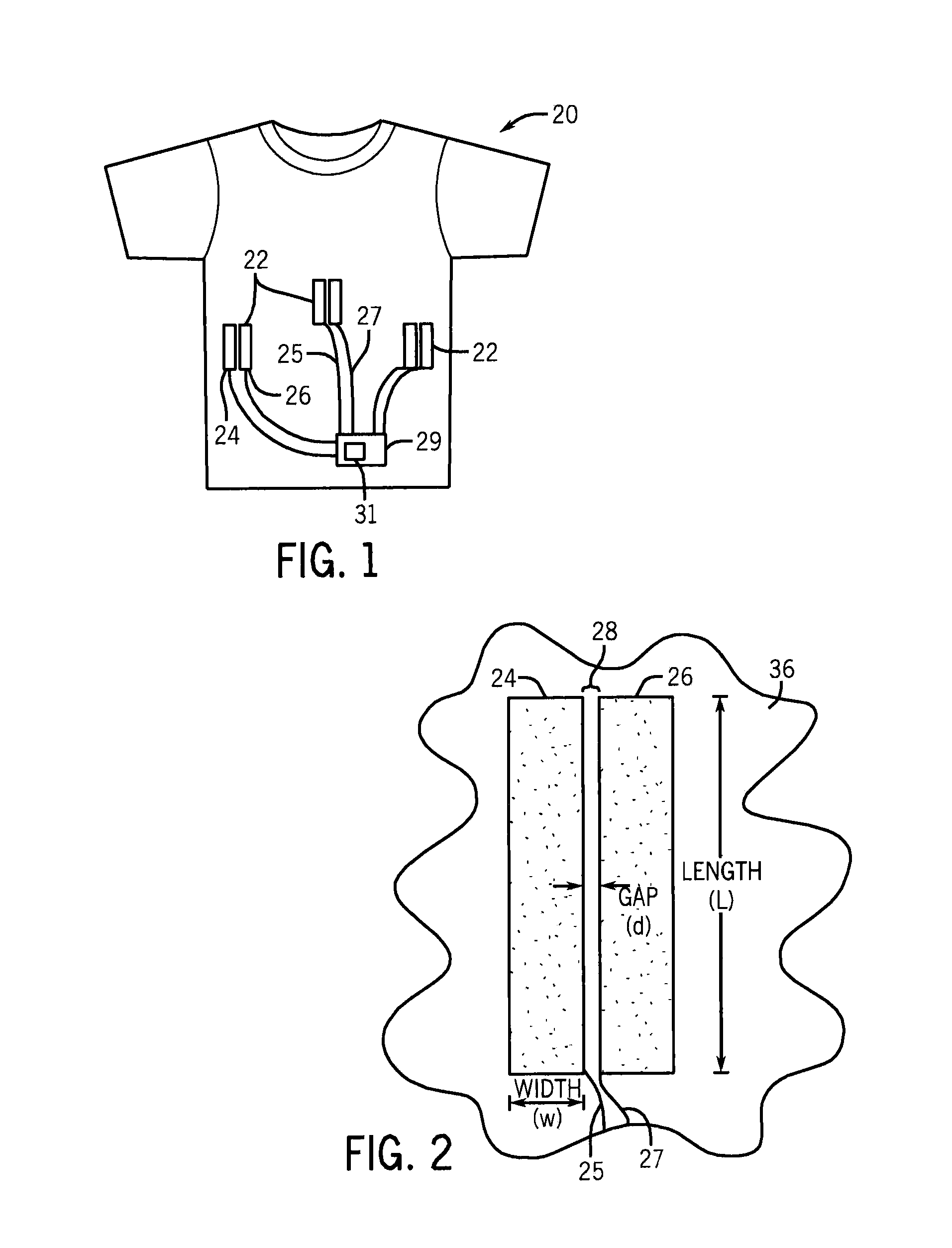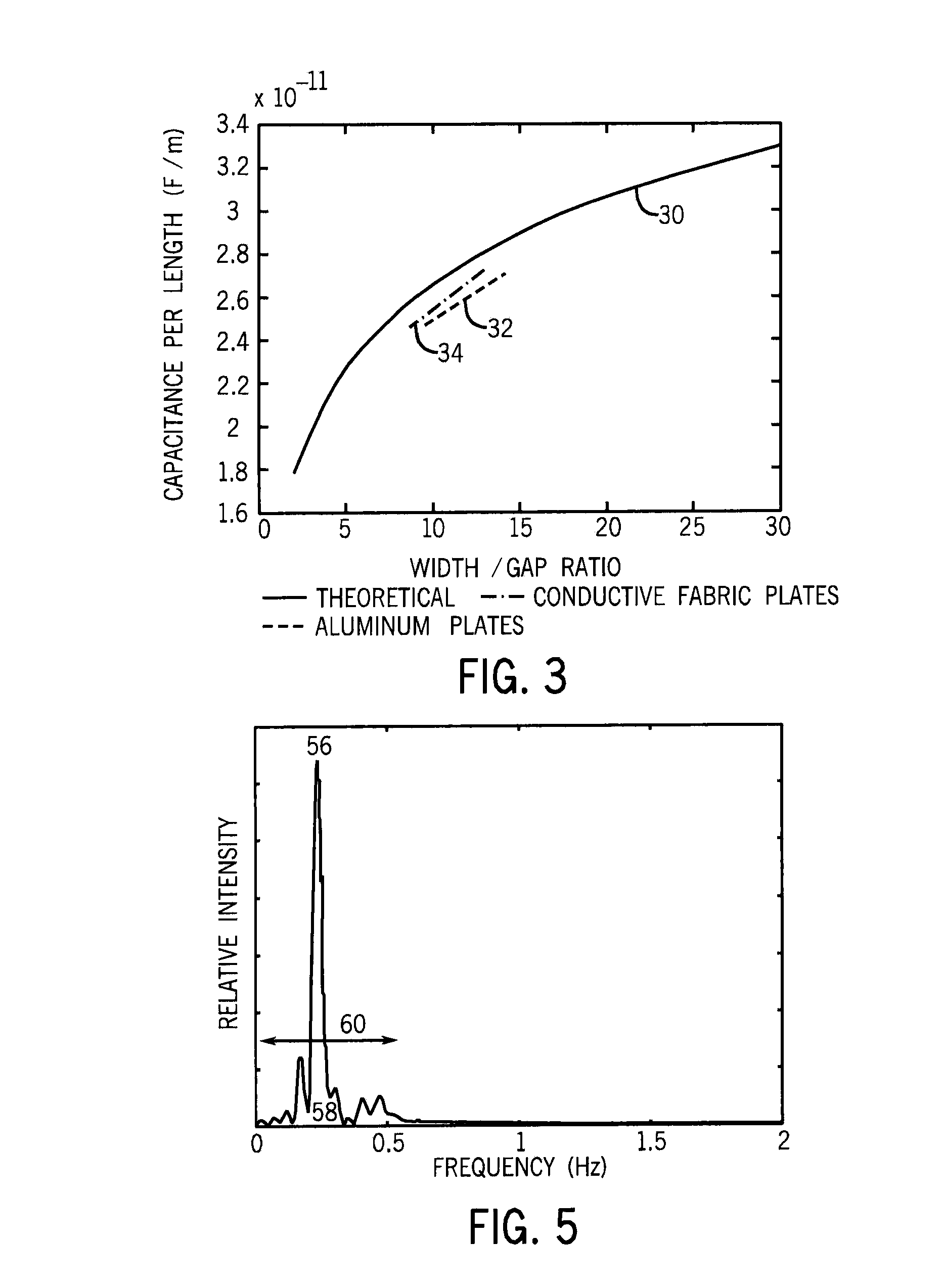Systems and methods to monitor and quantify physiological stages
a physiological state and system technology, applied in the field of physiological state monitoring systems and methods, can solve the problems of inherently expensive sleep study, high cost, and many people with insomnia and other sleep disorders undiagnosed, and achieve the effect of accurate monitoring of sleep health
- Summary
- Abstract
- Description
- Claims
- Application Information
AI Technical Summary
Benefits of technology
Problems solved by technology
Method used
Image
Examples
example
[0065]In order to validate the system's ability to accurately detect a clean respiration signal, a prototype test was conducted in which a subject was asked to sleep while being monitored both with the above-described system, including shirt 23 and associated sensors 22 of FIGS. 1 and 2 and the traditional (e.g., PSG) sleep study sensors. The test subject consisted of a healthy 21-year-old male with no known sleep disorders. The shirt 23 was connected to a Bluetooth device that transmitted data to an adjacent room during the test. This allowed for continuous monitoring of the data. A data logger (not shown) in parallel maintained a copy of the respiration data, and, after over two hours of continuous data collection, the subject was awoken. Shown in FIG. 9 is a sample of the respiration data gathered from the shirt 23.
[0066]The shirt 23 was able to gather a clean respiration signal 106 from the subject. With a small amount of post processing, such as removing high-frequency noise, a...
PUM
 Login to View More
Login to View More Abstract
Description
Claims
Application Information
 Login to View More
Login to View More - R&D
- Intellectual Property
- Life Sciences
- Materials
- Tech Scout
- Unparalleled Data Quality
- Higher Quality Content
- 60% Fewer Hallucinations
Browse by: Latest US Patents, China's latest patents, Technical Efficacy Thesaurus, Application Domain, Technology Topic, Popular Technical Reports.
© 2025 PatSnap. All rights reserved.Legal|Privacy policy|Modern Slavery Act Transparency Statement|Sitemap|About US| Contact US: help@patsnap.com



